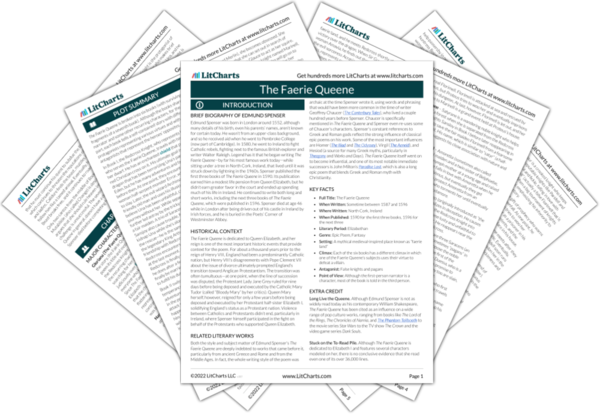As Arthegall finally begins to focus on his original quest of saving Eirena from the tyrant Grantorto, Book V heads toward its climax. Though it might seem that the events of the previous few cantos are unrelated to Arthegall’s main quest, the stories about Mercilla and Geryoneo were both stories about legitimate vs. illegitimate rule, and the story of Eirena and Grantorto will continue that theme.
